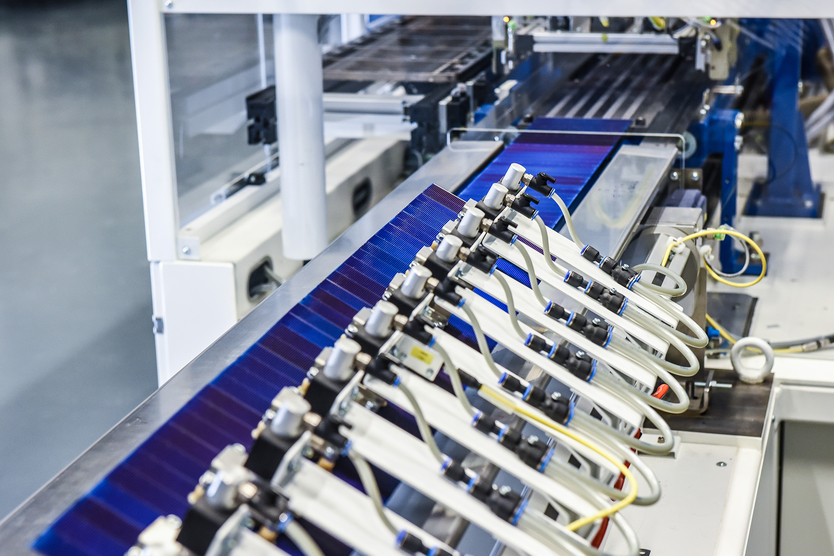
The project team, which brings together a consortium of plant manufacturers, metrology companies and research institutes, is aiming for throughput of 15,000 to 20,000 wafers per hour, effectively cutting production times by half.
© Fraunhofer ISE
Research funding is flowing into projects that will help Germany become more energy- and resource-independent in future. A new project headed by the Fraunhofer Institute for Solar Energy Systems (ISE) will focus on developing “proof of concept” for a high-throughput production line manufacturing silicon wafers for solar cells.
“In 2021, 78 percent of all silicon solar cells were produced in China,” explains Dr Ralf Preu, from the PV Production Technology team at ISE, in a press release, setting the scene. “In order to deploy more solar installations as quickly as possible and to make our supply chains more robust, Europe should re-establish its own production centres for high-efficiency solar cells.”
The project team, which brings together a consortium of plant manufacturers, metrology companies and research institutes, is aiming for throughput of 15,000 to 20,000 wafers per hour, effectively cutting production times by half.
Every stage of production was interrogated to improve productivity, and many processes had to be reinvented. For example, the researchers developed new on-the-fly laser equipment, which continually processes the wafers as they move at high speed underneath a laser scanner. Rotary screen printing was also used for metallizing the cells instead of conventional flatbed screen printing.
The researchers also combined the thermal oxidisation of the wafers and doping of different layers into one process step, where the wafers are stacked up in the furnace. Using this new method, throughput was increased by a factor of 2.4 but cell efficiency was not compromised.
Finally, quality control was revised for completed cells using a new “contactless” method, which greatly accelerated testing – a patent has been filed for the new method. The project has been funded by the German Ministry of Economic Affairs and Climate Action.


